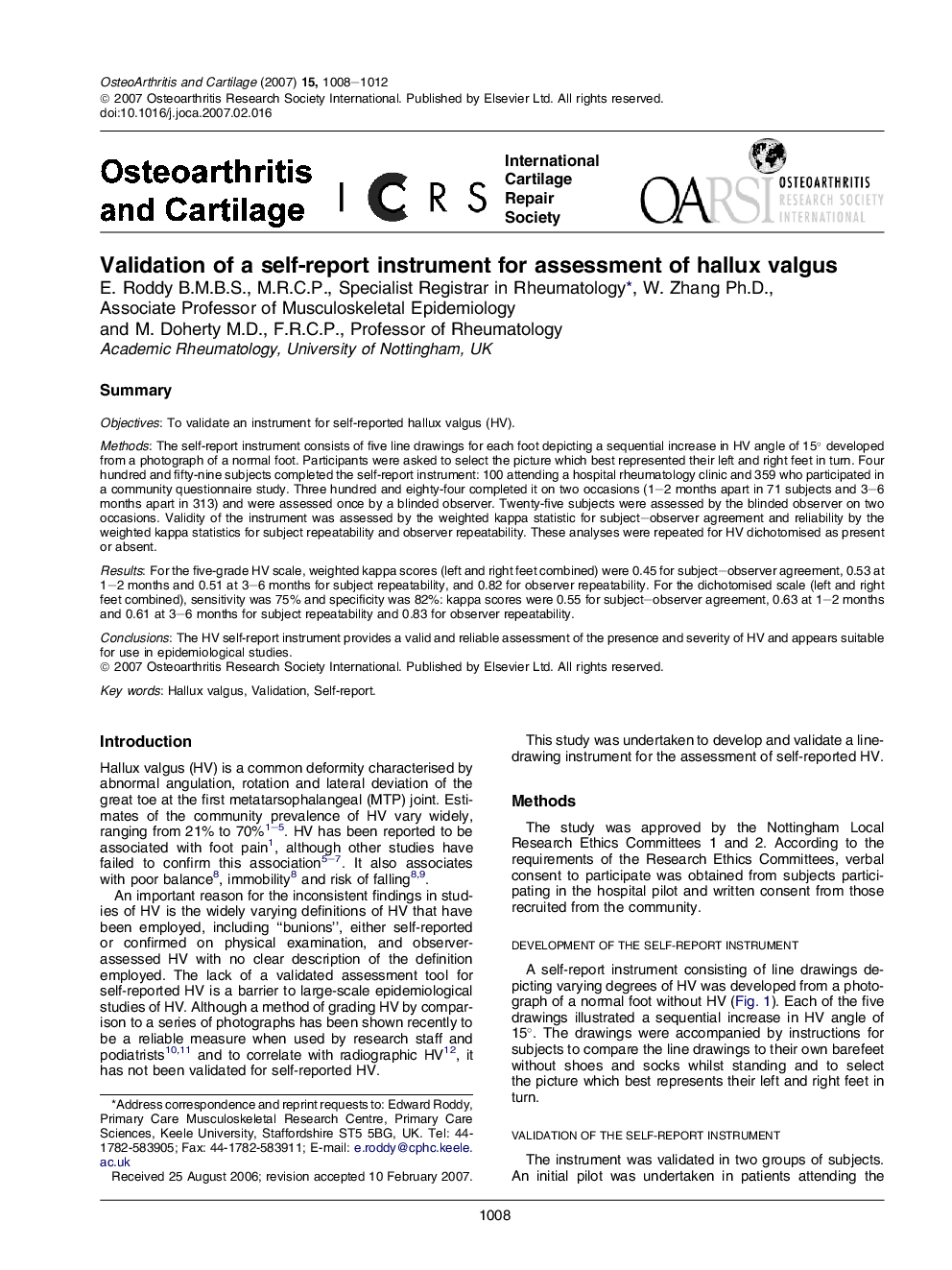| Article ID | Journal | Published Year | Pages | File Type |
|---|---|---|---|---|
| 3381423 | Osteoarthritis and Cartilage | 2007 | 5 Pages |
SummaryObjectivesTo validate an instrument for self-reported hallux valgus (HV).MethodsThe self-report instrument consists of five line drawings for each foot depicting a sequential increase in HV angle of 15° developed from a photograph of a normal foot. Participants were asked to select the picture which best represented their left and right feet in turn. Four hundred and fifty-nine subjects completed the self-report instrument: 100 attending a hospital rheumatology clinic and 359 who participated in a community questionnaire study. Three hundred and eighty-four completed it on two occasions (1–2 months apart in 71 subjects and 3–6 months apart in 313) and were assessed once by a blinded observer. Twenty-five subjects were assessed by the blinded observer on two occasions. Validity of the instrument was assessed by the weighted kappa statistic for subject–observer agreement and reliability by the weighted kappa statistics for subject repeatability and observer repeatability. These analyses were repeated for HV dichotomised as present or absent.ResultsFor the five-grade HV scale, weighted kappa scores (left and right feet combined) were 0.45 for subject–observer agreement, 0.53 at 1–2 months and 0.51 at 3–6 months for subject repeatability, and 0.82 for observer repeatability. For the dichotomised scale (left and right feet combined), sensitivity was 75% and specificity was 82%: kappa scores were 0.55 for subject–observer agreement, 0.63 at 1–2 months and 0.61 at 3–6 months for subject repeatability and 0.83 for observer repeatability.ConclusionsThe HV self-report instrument provides a valid and reliable assessment of the presence and severity of HV and appears suitable for use in epidemiological studies.
